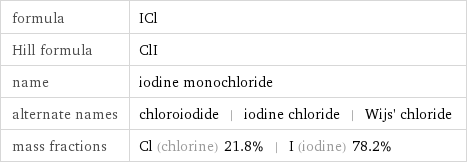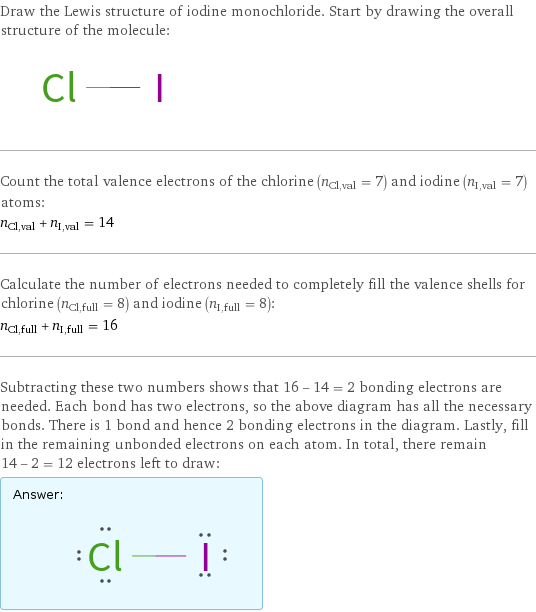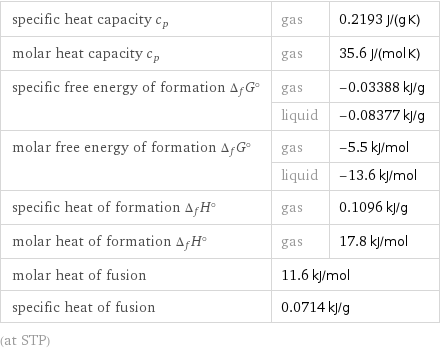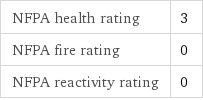Input interpretation

iodine monochloride
Chemical names and formulas

formula | ICl Hill formula | ClI name | iodine monochloride alternate names | chloroiodide | iodine chloride | Wijs' chloride mass fractions | Cl (chlorine) 21.8% | I (iodine) 78.2%
Lewis structure

Draw the Lewis structure of iodine monochloride. Start by drawing the overall structure of the molecule: Count the total valence electrons of the chlorine (n_Cl, val = 7) and iodine (n_I, val = 7) atoms: n_Cl, val + n_I, val = 14 Calculate the number of electrons needed to completely fill the valence shells for chlorine (n_Cl, full = 8) and iodine (n_I, full = 8): n_Cl, full + n_I, full = 16 Subtracting these two numbers shows that 16 - 14 = 2 bonding electrons are needed. Each bond has two electrons, so the above diagram has all the necessary bonds. There is 1 bond and hence 2 bonding electrons in the diagram. Lastly, fill in the remaining unbonded electrons on each atom. In total, there remain 14 - 2 = 12 electrons left to draw: Answer: | |
Basic properties

molar mass | 162.35 g/mol phase | solid (at STP) melting point | 26 °C boiling point | 97.4 °C density | 3.24 g/cm^3 solubility in water | decomposes
Units

Solid properties (at STP)

density | 3.24 g/cm^3 vapor pressure | 30 mmHg (at 18 °C)
Units

Thermodynamic properties

specific heat capacity c_p | gas | 0.2193 J/(g K) molar heat capacity c_p | gas | 35.6 J/(mol K) specific free energy of formation Δ_fG° | gas | -0.03388 kJ/g | liquid | -0.08377 kJ/g molar free energy of formation Δ_fG° | gas | -5.5 kJ/mol | liquid | -13.6 kJ/mol specific heat of formation Δ_fH° | gas | 0.1096 kJ/g molar heat of formation Δ_fH° | gas | 17.8 kJ/mol molar heat of fusion | 11.6 kJ/mol | specific heat of fusion | 0.0714 kJ/g | (at STP)
Chemical identifiers

CAS number | 7790-99-0 PubChem CID number | 24640 PubChem SID number | 24871766 SMILES identifier | ClI InChI identifier | InChI=1/ClI/c1-2 RTECS number | NN1650000 MDL number | MFCD00011354
NFPA label

NFPA label

NFPA health rating | 3 NFPA fire rating | 0 NFPA reactivity rating | 0
Toxicity properties

RTECS classes | other